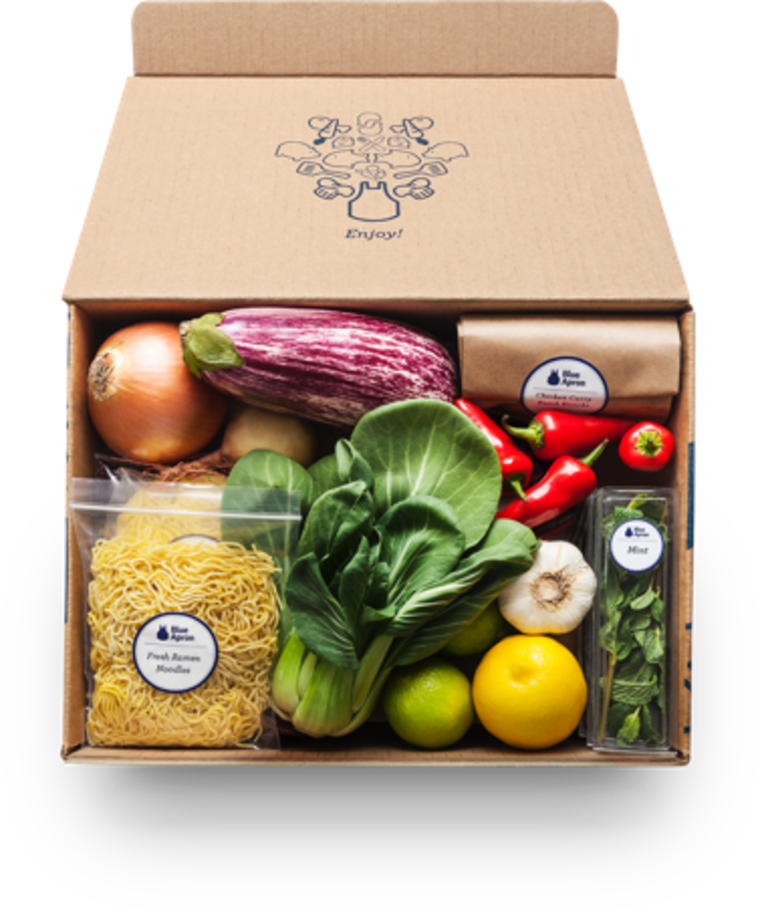With promises of quick, convenient and delicious home-cooked food, meal kits have become increasingly popular over the past few years, with more and more contenders on the scene.
These services aren't just about the food — they also provide wannabe chefs a sense of pride in actually putting a meal together, even if everything is already pre-portioned.
Now, grocery stores are also offering boxed meal kits, completely axing the delivery-service model. And while all these kits are trendy and delicious, are they actually a good deal?
One major perk that meal kits offer is the idea of limiting food waste since grocery shopping sometimes leads to excess ingredient purchases. For anyone cooking for one or two people, buying an entire head of broccoli or a big bunch of cilantro that won't get used usually doesn't make much sense. Meal kits provide the opportunity for consumers to get exactly what's needed for a serving — without any leftovers.
But how high is the price of convenience?
“The pre-measured ingredients within each kit allow you to accomplish this food-driven connection more easily and the instructions on recipes that are included allow you to give simple tasks to others when it comes to helping you with meal prep,” Bonnie Taub-Dix, RDN, author of "Read It Before You Eat It - Taking You from Label to Table," told TODAY Food.
For some, meal kits also offer an introduction to new proteins, spices or unusual ingredients they’ve never tried before. They also offer the new (or relatively timid) home cook a chance to sharpen kitchen skills while lessening the risk of a major disaster since many of the kits include recipes that feature photos of key steps in the cooking process.
“Use of these kits could allow you to explore and open your world to bring enjoyment of cultural foods with diverse textures and flavors,” said Taub-Dix.
When it comes to budget, however, the true value of meal kits becomes more debatable.
Depending on the plan, a meal kit that serves two people will run around $20, which may be more than a lot of people are paying for groceries per meal. For example, Blue Apron charges $47.95 a week for two meals for two people, which breaks down to $9.99 a serving, plus a $7.99 shipping fee. That may sound steep to the budget shopper, but it might save a lot of time for anyone that spends a lot of time in the supermarket buying foods that eventually get trashed anyway.
“If you only rely on these kits, they could wind up costing less than over-shopping,” said Taub-Dix.
With meal kits involving recipes like Cajun shrimp, corn pancakes and sautéed summer vegetables, it's easy to see how buying expensive ingredients like seafood and an assortment of new spices (that you may only use a few times a year) quickly add up to being more expensive if purchased individually at the grocery store.
However, with vegetarian recipes (or ones involving less expensive proteins like chicken thighs), shopping a la carte may be easier on the wallet.
Another strategy to consider is to build meals around what happens to be on sale and only buy as much as needed.
“From a financial perspective, you are generally best off buying the ingredients separately and cooking from scratch,” Lisa R. Young, PhD, RD, a nutritionist who does a lot of meal planning with clients, told TODAY Food. However, said Young, it is often overwhelming for people to do a lot of pre-planning and shopping. The kits offer portion control and convenience.
“If you are on a budget, they [meal kits] may not be for you. But if you are a very busy executive, these kits take the guess work out and make it easy to get a meal on the table,” said Young.
As for the nutritional value of meal kits, they vary widely. “I’ve seen kits that include [anything] from heavy cream sauces and decadent desserts to juice cleanses,” said Taub-Dix. Choose the kit that provides foods that are interesting, well-balanced, healthy and a bit adventurous to give you a chance to try new things. And don't be afraid to adapt meal-kit recipes to your diet. If a meal kit suggests using a ton of oil or salt in the cooking process, it is absolutely fine to modify it.

Meal kits aren't always ideal for those watching their waistlines but they could be a gateway to healthier lifestyles, if you're picking the right plan “If you're eating fatty or fried takeout every night because you don't want to cook, these meal services are going to be a big improvement,” Alix Turoff, a registered dietitian, told TODAY Food. The pre-packaged kits encourage portion control, which is valuable to a balanced diet, as well.
Ultimately, meal-kit subscription services are just like any other form of shopping or dining out. All of the experts advised paying attention to ingredients, gaining a thorough understanding of how the meals are prepared and knowing how much you're really spending.